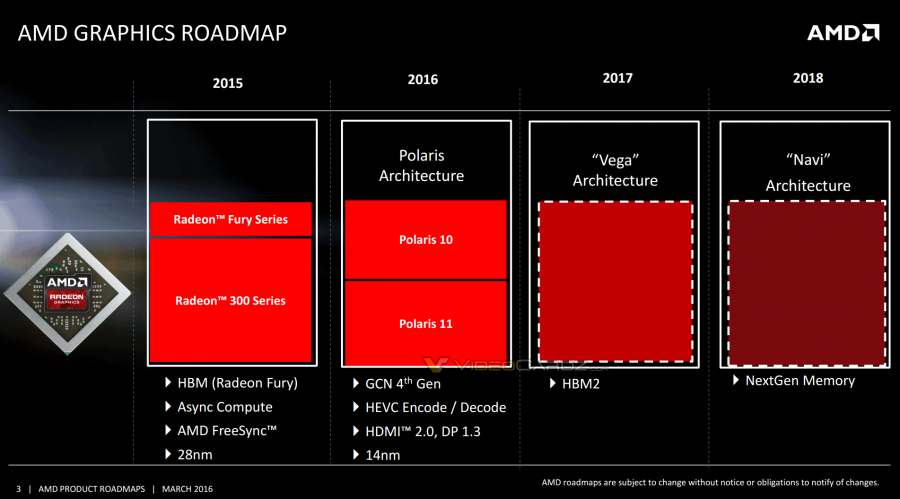Panicking over geforce 1080 perhaps?
The general feeling is that AMD were pretty shocked over the clock speeds Nvidia were able to get out of their silicon. The architectural tweaks of Pascal aren't anything wondrous, but overall performance gets a big lift from the sheer speed the silicon runs at. Seems AMD were banking on more conservative clocks and allied with their own purported
failed clock speed validation for Polaris at modest clocks. it might have them in a nervous state.
Having said that, the Vega in October rumour originates from someone posting at SemiAccurate's forums. I'd suggest the rumour be taken with more than a pinch of salt
Wonder if they will manage to fit on HBM2 or go with GDDR5X
Vega was slated to use HBM2. Having said that, Synopys (the company that lays out AMD's chips) shouldn't have any difficulty swapping out the HBM I/O and controller logic blocks for GDDR5X if required.
I originally thought that the 1080 would be HBM# based and the 1070 would be based on GDDR5X, but was of course wrong.
It was an unrealistic expectation. HBM2 hasn't started volume production, and even if it had, the assembly costs (GPU+HBM2+CoWoS interposer) would make it economically inviable at the prices the cards need to sell at. AMD effectively lost money on Fiji - I doubt Nvidia was planning on following suit. At the moment, I suspect a huge portion of HBM2 production is going towards getting the
4,500 Tesla P100 board contract the Piz Daint's upgrade fulfilled. At $10,000 per GPU module, it's a no-brainer as to where the HBM2 production should be going.
GDDR5X is very likely the same proposition. There is probably enough initial production to keep the GTX 1080 assembly line happy, but that will be a relatively small volume of cards. If the GTX 1070 mirrors the GTX 970 and sells 250,000 cards a month, that would be a tough ask for a newly ramping technology. I wouldn't be surprised to see a GTX 1070 refresh feature GDDR5X though - the memory controllers are obviously the same as for the 1080.
AMD did "move up" anything. They simply revealed a conservative road map
Basically the opposite of what AMD usually do then.
Vega was originally slated for 2017, but bringing a roadmap in is a whole lot better than letting it lapse...or forgetting about it completely



